CAS Number 8000-73-5 or 10361-29-2 or [506-87-6 (NH4)2CO3], Ammonium Carbonate USP Analytical Reagent FCC Food Grade Manufacturers Exporters
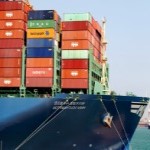
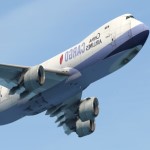
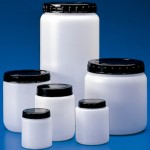
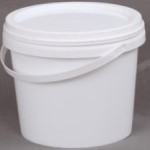
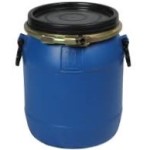
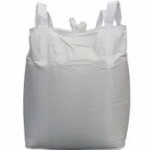
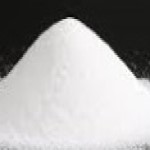
CAS Number 8000-73-5 or 10361-29-2 or [506-87-6 (NH4)2CO3], Ammonium Carbonate Manufacturer Exporter
For Properties Specifications of Ammonium Carbonate Click Properties, Specifications of Ammonium Carbonate Manufacturer.
For Uses of Ammonium Carbonate Click Uses of Ammonium Carbonate Manufacturer.
For For SDS MSDS Sheet of Ammonium Carbonate Click SDS Safety Data Sheet MSDS Sheet of Ammonium Carbonate Manufacturer.
The Properties and Specifications of Ammonium Carbonate:
Ammonium Carbonate USP Grade Specifications
Carbonic acid, monoammonium salt, mixture with ammonium carbamate.
Monoammonium carbonate mixture with ammonium carbamate CAS 8000-73-5
Ammonium Carbonate consists of ammonium bicarbonate (NH 4HCO3) and ammonium carbamate (NH2COONH4) in varying proportions. It yields not less than 30.0 percent and not more than 34.0 percent of NH3.
Identification: When heated, it is volatilized without charring, and the vapor is alkaline to moistened litmus paper. A solution (1 in 20) effervesces with acids.
Residue on ignition: not more than 0.1%.
Chloride: Maximum 0.0035%.
Sulfate: A 2.0-g portion shows no more sulfate than corresponds to 0.10 mL of 0.020 N sulfuric acid (0.005%).
Heavy metals: the limit is 0.001%.
Ammonium Carbonate FCC Food Grade Grade Specifications
INS: 503(i); CAS 10361-29-2
DESCRIPTION
Ammonium Carbonate occurs as a white powder or as hard, white or translucent masses. It consists of ammonium bicarbonate (NH4HCO3) and ammonium carbamate (NH2-COONH4) in varying proportions. On exposure to air it becomes opaque and is finally converted into porous lumps or a white powder of ammonium bicarbonate because of the loss of ammonia and carbon dioxide. One gram dissolves slowly in about 4 mL of water. Its solutions are alkaline to litmus.
Function: Buffer; leavening agent; neutralizing agent.
REQUIREMENTS
Identification: When heated, a sample volatilizes without charring, and the vapor is alkaline to moistened litmus paper. A 1:20 aqueous solution effervesces when an acid is added.
Assay: Not less than 30.0% and not more than 34.0% of NH3.
Chloride: Not more than 0.003%.
Lead: Not more than 3 mg/kg.
Nonvolatile Residue: Not more than 0.05%.
Sulfur Compounds (as SO4): Not more than 0.005%.
Ammonium Carbonate Analytical Reagent Grade Specifications
CAS Number 8000-73-5
NOTE. This product is a mixture of variable proportions of ammonium bicarbonate and ammonium carbamate.
REQUIREMENTS
Assay: ≥30.0% NH3
MAXIMUM ALLOWABLE
Insoluble matter: 0.005%
Nonvolatile matter: 0.01%
Chloride (Cl): 5 ppm
Sulfur compounds (as SO4): 0.002%
Heavy metals (as Pb): 5 ppm
Iron (Fe): 5 ppm.
The Uses of Ammonium Carbonate:
Ammonium carbonate is the predecessor to the more modern leavening agents baking soda and baking powder. It is also the main component in smelling salts. Additionally, it is used as an emetic and an active ingredient in some cough syrups. Since it readily degrades to gaseous ammonia and carbon dioxide upon heating, it is used as a leavening agent and also as smelling salt.
The MSDS-SDS Hazard Statement of Ammonium Carbonate:
Ammonium Carbonate SDS, Safety Data Sheet
MSDS Sheet, Material Safety Data Sheet 15-Nov-24
1. Product Identification
Product Name & Other Names: Ammonium Carbonate
CAS No.: 8000-73-5 or 10361-29-2 and 506-87-6 for Pure grade (NH4)2CO3
EINECS EC Number: 233-786-0
Relevant uses and uses advised against (if any): Industrial Manufacturing.
Suppliers: As per letterhead.
2.Hazards Identification
GHS, Globally Harmonized System Classification in accordance with 29 CFR 1910
Classification according to Regulation (EC) No 1272/2008:
Acute toxicity, Oral Category 4
Skin corrosion/irritation (Category 2)
Serious eye damage/eye irritation Category 2A
Hazardous to the aquatic environment, acute hazard Category 3
Labeling according to GHS & Regulation (EC) No 1272/2008
GHS Label Elements 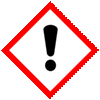 Irritant Harmful |
Signal Words>: Warning
Hazard statements:
H302: Harmful if swallowed.
H315: Causes skin irritation.
H319: Causes serious eye irritation.
H402: Harmful to aquatic life.
Precautionary statements:
P264 Wash skin thoroughly after handling.
P270 Do not eat, drink or smoke when using this product.
P273 Avoid release to the environment.
P280: Wear protective gloves/protective clothing/eye protection/face protection.
P301+P312: IF SWALLOWED: Call a POISON CENTER or doctor/physician if you feel unwell.
P302+352: IF ON SKIN: Wash with soap and water.
P332+313: If skin irritation occurs: Get medical advice/attention.
P305+351+338: IF IN EYES: Rinse cautiously with water for several minutes. Remove contact lenses if present and easy to do – continue rinsing.
3. Composition/Information on Ingredients
Product Name & Other Names: Ammonium Carbonate
CAS No.: 8000-73-5 or 10361-29-2 and 506-87-6 for Pure grade (NH4)2CO3
EINECS EC Number: 233-786-0
4. First Aid Measures
Always seek medical attention after first aid measures are provided.
Inhalation: Remove to fresh air. If not breathing, give artificial respiration. If breathing is difficult, give oxygen. Get medical attention.
Ingestion: Do not induce vomiting unless as directed by medical personnel. Never give anything by mouth to an unconscious person. Get medical attention.
Skin Contact: Immediately flush skin with plenty of water for at least 15 minutes. Remove contaminated clothing and shoes. Get medical attention. Wash clothing before reuse. Thoroughly clean shoes before reuse.
Eye Contact: Check for and remove any contact lenses. In case of contact, immediately flush eyes with plenty of water for at least 15 minutes. Cold water may be used. Get medical attention.
5. Fire Fighting Measures
Fire: Not considered to be a fire hazard. At fire temperatures it begins to corrode metals and may dissociate into ammonia, oxides of nitrogen and carbon dioxide.
Explosion: It is not considered to be an explosion hazard.
Fire Extinguishing Media: Use water spray, alcohol-resistant foam, dry chemical or carbon dioxide. Water spray may be used to keep fire exposed containers cool.
Special Information: In the event of a fire, wear full protective clothing and NIOSH-approved self-contained breathing apparatus with full face piece operated in the pressure demand or other positive pressure mode.
6. Accidental Release Measures
Personal precautions, protective equipment, and emergency procedures: Avoid breathing dust/fumes/gas/mist/vapors/spray. Ensure adequate ventilation. Use individual protective equipment (waterproof boots, suitable protective clothing, safety glasses, etc.).
Environmental precautions: Do not let the product enter drains, soil, or water sources.
Methods and materials used for containment Cleanup procedures and Storage:
Small Spill: Use appropriate tools to put the spilled solid in a convenient waste disposal container.
Large Spill: Contain spilled material. Cover with an inert, non-combustible absorbent material, (e.g. sand, earth, diatomaceous earth, vermiculite). Use personal protective equipment. Avoid dust formation. Avoid breathing vapors, mist, or gas. Ensure adequate ventilation. Avoid breathing dust. Use a shovel to put the material into a convenient waste disposal container. Do not let product enter drains. Pick up and arrange disposal without creating dust. Sweep up and shovel.
7. Handling and Storage
Precautions for safe handling: Apply according to good manufacturing and industrial hygiene practices. Ensure proper ventilation. Wash thoroughly after handling. Do not drink, eat, or smoke while handling. Avoid contact with skin, eyes, and clothing. Minimize dust generation. Avoid breathing dust/fumes/gas/mist/vapors/spray. Avoid contact with eyes, skin, and clothing. Keep container tightly closed. Avoid ingestion and inhalation. Use individual protective equipment (waterproof boots, suitable protective clothing, safety glasses, etc.).
Conditions for safe storage, including any incompatibilities: Store in cool, dry, and ventilated area away from heat sources and protected from sunlight in tightly closed original container. Keep air contact to a minimum. Do not leave the material container open. Store protected from heat, sparks and ignition sources and incompatible materials. Avoid inhalation of dust/mist/vapor. Do not store with incompatible materials like concentrated acids, strong bases, oxidizing agents. Store away from sources of heat, moisture.
8. Exposure Controls/Personal Protection
Airborne Exposure Limits: Not established
Ventilation System: A system of local and/or general exhaust is recommended to keep employee exposures below the Airborne Exposure Limits.
Personal Respirators (NIOSH Approved): If the exposure limit is exceeded and engineering controls are not feasible, a half face piece particulate respirator (NIOSH type N95 or better filters) may be worn for up to ten times the exposure limit or the maximum use concentration specified by the appropriate regulatory agency or respirator supplier, whichever is lowest. A full-face piece particulate respirator (NIOSH type N100 filters) may be worn up to 50 times the exposure limit, or the maximum use concentration specified by the appropriate regulatory agency, or respirator supplier, whichever is lowest.
Skin Protection: Wear impervious protective clothing, including boots, gloves, lab coat, apron or coveralls, as appropriate, to prevent skin contact.
Eye Protection: Use chemical safety goggles and/or full face shield where dusting or splashing of solutions is possible. Maintain eye wash fountain and quick-drench facilities in work area.
9. Physical and Chemical Properties
Appearance: White solid.
Odor: Strong ammonia odor.
Odor threshold: No data found.
pH: >9
Relative density: No data found.
Melting Point: 58C
Initial boiling point and boiling range: No data found.
Flash point: No data found.
Auto-ignition temperature: No data found.
Decomposition temperature: No data found.
Upper/lower flammability or explosive limits: No data found.
Vapor Pressure (mm Hg): 1.0 @ 160C (320F).
Vapor Density (Air=1): 1.9
Evaporation rate:No data found.
Flammability (solid, gas): No data found.
Partition coefficient: n-octanol/water: No data found.
Solubility: Soluble in water.
Viscosity: No data found.
10. Stability and Reactivity
Stability: Stable under ordinary conditions of use and storage.
Hazardous Decomposition Products: Involvement in a fire causes decomposition to form carbon dioxide and ammonia.
Hazardous Polymerization: Will not occur.
Incompatibilities: Concentrated acids, strong bases, oxidizing agents, heat.
11. Toxicological Information
Acute toxicity:
LD50 Oral - Rat - male and female: 2.150 mg/kg
LD50 Oral - Rat - female: 1.800 mg/kg
LD50 Dermal - Rat : > 2.000 mg/kg
LD50 Intravenous - Mouse: 96 mg/kg
Carcinogenicity: The product is not classed as carcinogen by IARC, ACGIH, NTP, OSHA.
Mutagenic Effects: No data found.
Developmental Toxicity: No data found.
Reproductive Effects: No data found.
12. Ecological Information
Toxicity to fish: LC50 (96 h) 61 mg/l, Oncorhynchus mykiss (Flow through.) Literature.
Toxicity to daphnia and other aquatic invertebrates: EC50 (48 h) 63.7 mg/l, Daphnia magna.
Persistence and Degradability: Degradable.
Mobility: Mobile due to water solubility.
Bioaccumulation/ Accumulation: Not likely to accumulate.
Results of PBT and vPvB assessment: This substance/mixture contains no components considered to be either persistent, bioaccumulative and toxic (PBT), or very persistent and very bioaccumulative (vPvB) at levels of 0.1% or higher.
13. Disposal Considerations
Whatever cannot be saved for recovery or recycling should be managed in an appropriate and approved waste disposal facility. Follow all the pollution control norms.
14. Transport Information
DOT (US) ADR/RID: Not controlled.
IMDG: Not controlled.
IATA: Not controlled.
15. Regulatory Information
USA:
SARA 311/312 Hazards: See section 2.
California Prop. 65 Components: Not listed.
16. Other Information
Disclaimer:
*************************
Our company provides this SDS information sheet contained herein in good faith but makes no representation as to its comprehensiveness or accuracy. This MSDS sheet is intended only as a guide to the appropriate precautionary handling of the material by a properly trained person using this product. Individuals receiving the information must exercise their independent judgment in determining its appropriateness for a particular purpose.
*************************
Anmol Chemicals & Pharmaceuticals Pvt. Ltd. is an off-shoot of Anmol Chemicals Taloja. It is located in MIDC Taloja and it is manufacturing pharmaceutical grades of API, Excepients, Food grade and Reagent grade chemicals. Anmol Chemicals & Pharmaceuticals Pvt. Ltd. is a several decades old group of companies, engaged in manufacturing, supplying, distributing, wholesale supplies for actual users, retail or small pack supplies for research and development chemicals, fine and speciality chemicals, pharmaceutical excipients, mineral fortifiers in chemically pure, Analytical reagent grade, IP BP USP Ph Eur EP JP and other pharmaceutical grade monograph including FCC Food grade chemicals and Nutraceuticals, Mineral Fortifiers at best prices.
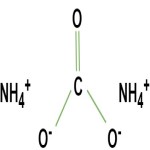
Ammonium Carbonate Structure
CAS Number 8000-73-5 or 10361-29-2 or [506-87-6 (NH4)2CO3], Ammonium Carbonate Manufacturer Exporter
ANMOL CHEMICALS & PHARMACEUTICALS Pvt. Ltd.
India, USA, Europe, UAE
TELEPHONE: +912223770100
Navi Mumbai, INDIA
e-mail: info(At the rate i.e. @)anmol.org
Copyright. 3-may-25
We manufacture:
Glacial Acetic Acid Manufacturer
Ammonia Solution Concentrated or Ammonium Hydroxide Solution
Aluminum Chloride Hexahydrate Anhydrous
Aluminum Chlorohydrate Solution Powder
Dihydroxyaluminum Aminoacetate
Dihydroxyaluminum Sodium Carbonate

